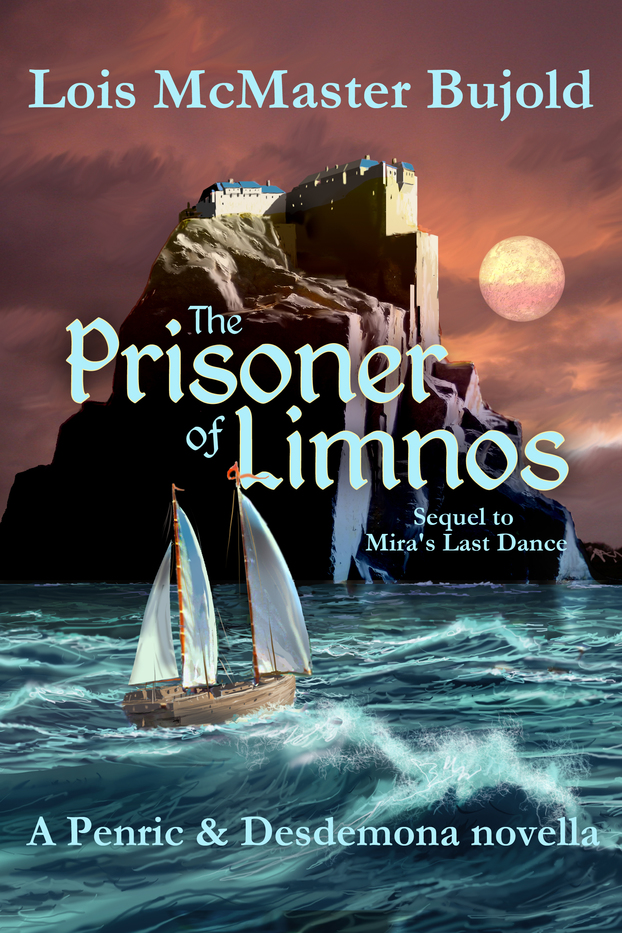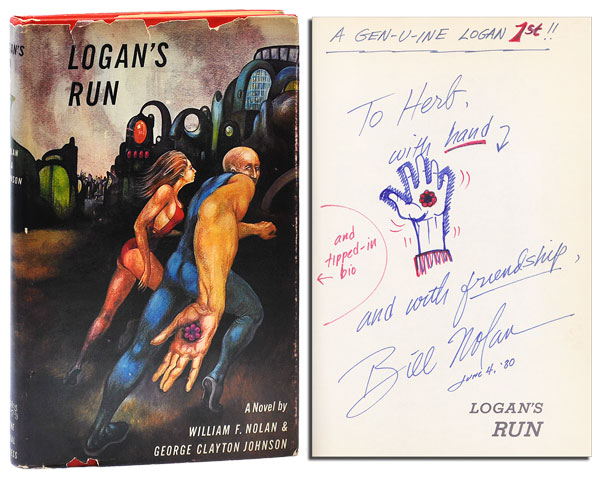(1) ROLL ELEVEN. Nicholas Whyte reviews “Doctor Who, Series 11 (or 37), 2018”, beginning with an overview, followed by comments on individual episodes:
…Overall I have enjoyed it. I don’t agree with Darren Mooney that this has been the weakest series of New Who; I really think that Series 6 (2011), which started with The Impossible Astronaut and ended with The Wedding of River Song, made much greater demands onthe viewer for insufficient payoff. However I think I will agree that the highest points of this year’s stories were not as high as those of previous New Who seasons; even Series 6 had The Doctor’s Wife. On the other hand, none of the low points was quite as awful as the 2007 Daleks in New York two-parter or the 2014 Kill The Moon. I do agree with Darren Mooney that it looks in general much much better than any series of Doctor Who ever has before. The absence of continuity (no theme music in the first episode, no Tardis interior until episode two) was disruptive but also intriguing. The new music is a welcome change (not that I hated Murray Gold, but he’s been doing it since 2004)….
(2) SON’S MEMORIES OF LE GUIN. “Ursula K Le Guin remembered by her son Theo Downes-Le Guin” in The Guardian.
One of the last trips I took alone with Ursula was to New York, in 2014, when she received a lifetime commendation from the National Book Foundation. She wasn’t enthusiastic about the travel, but the award was contingent on her presence. She snarled about this requirement for a few weeks, then allowed me to book the flights. I spent a couple of days with her before the awards, visiting her beloved sister-in-law and viewing “old friends” the Metropolitan Museum and the Frick Collection. In the indifferent and harsh light of a big city, I could see for the first time how small and frail she had become. The vitality of her mind and spirit had concealed her physical state from me. I was shaken by the realisation.
Three days into our trip, I walked her to the stage on which she delivered a speech that was, even by her high standards, fearless. With limited time, in every sense, she had decided to speak plainly to the defence of freedom that courses through her work: freedom of artistic and intellectual expression, freedom from dualism, freedom from oppressors. I’d read a draft beforehand and knew that she was delivering the speech of a lifetime. The audience sensed this as well, and for a few moments after she finished, the room crackled with love, support, excitement and (for some, I’d like to think) shame.
(3) A WINNER. Seeing the movie prompted John Scalzi to have many “Thoughts on Spider-Man: Into the Spider-Verse”.
2. It’s also a film where its chosen medium — animation — is exactly right for it. I think there’s a still a bit of aesthetic snobbery around animation, ironically particularly when it comes to superhero films. It’s still assumed to be a compliment if you say something along the lines of “that was good enough to have been live action.” In point of fact, this particular film wouldn’t have been better served as live action; live action and all its aesthetic requirements and expectations would have made it worse. The abstracting remove from reality that animation provides fits the film’s multiverse story and allows it to be a “comicbook film” in a way that most live-action superhero films can’t manage or look silly doing (see: Ang Lee’s Hulk).In live action, this film as it is would have come across as campy; in animation, it’s just doing its thing. This is of course more about our own expectations for live action and animation than it is about the mediums themselves. But you work with what you have.
(4) THE DRAGON CURE. After receiving an anonymous letter from a neighbor claiming that her three front-yard dragons violated the “true meaning of Christmas,” fantasy author Diana Rowland decided that the only proper response was … MORE DRAGONS!
(5) JUDGING SANTA CLAUS MOVIES. SYFY Wire’s “Ffangrrls” column examines “The best, worst and weirdest Santa Claus movies.” Good. Bad. Weird. Ffangrrls takes a look at four Santa Claus movies in each of these categories. It’s a pretty good bet that you won’t have even heard of one or more of these dozen, um, let’s say “classics.” Columnist Kayleigh Donaldson provides a trailer or clip and a fat paragraph on each:
GOOD: Miracle on 34th Street
BAD: The Santa Clause
WEIRD: Santa Claus Conquers the MartiansGOOD: Rise of the Guardians
BAD: Silent Night, Deadly Night
WEIRD: The Polar ExpressGOOD: The Nightmare Before Christmas
BAD: Santa’s Slay
WEIRD: Fred ClausGOOD: The Spirit of Christmas
BAD: The Christmas Chronicles
WEIRD: Christmas Evil
(6) SPLATTERPUNK IN ITALY.At the Horror Writers Association blog: “Revelations on the New Horror Renaissance – an Interview with Italian Author/Editor/Translator/Poet Alessandro Manzetti”.
Q. As the first Italian to be awarded the Bram Stoker Award, and as a purveyor of hard-core horror and even splatter-punk how would you describe your reception amongst your Italian peers? What inroads do you hope to make in Italy with your publishing and writing?
A. Here in Italy Splatterpunk fiction represents a small market niche (same goes for poetry, and, unfortunately, also for traditional horror fiction, excluding a few big names), anyway I have a good audience, fans of the genre follow me with great passion; they’re very fond of some of my main characters, and many of them are women (even if I write hardcore/Splatterpunk horror). Somedays ago was released, from Cut Up Publishing, my first dark psycothriller novel, ‘The Keepers of Chernobyl’, something different from what I wrote so far, and I think that this kind of works could reach a larger audience. My goal is always the same: connect myself to the readers, be their accomplice.
(7) RAMBO ACADEMY. Sign up for Seanan McGuire’s workshop: “Crossing Over: Moving from Fanfic to Your Own Worlds”.
Join prolific, award-winning, and overall amazing writer Seanan McGuire for a workshop that will discuss what writing fanfic teaches you and how you can use that in fiction involving your own worlds and characters. Using lecture, discussion, and writing exercises, Sanan will provide you with inspiration as well as the tools with which to apply that inspiration to your work.
This is a single session workshop taught on Saturday, January 12, 2019 9:30-11:30 AM Pacific time.
Cost is 199 for new students; $79 for former Rambo Academy students and Patreon supporters.
Live classes are taught online via Google hangouts, are limited to 15 participants, and require reliable Internet connection, although in the past participants have logged on from coffee shops, cafes, and even an airplane. A webcam is strongly suggested but not required. If there is an on-demand version of the class, you will be provided with a free coupon for it, so you have access to those notes.
(8) THEY’REDEAD(POOL), JIM. Aw, Jeez, he’s at it again (HuffPost: “Marvel’s ‘Avengers: Endgame’ Trailer Is Even Better When Everyone Is Deadpool”).
So much Deadpool. Truly a maximum effort.
And we thought the last “Avengers” trailer was better when every character was Deadpool.
Istanbul-based digital animator Saruhan Saral has outdone himself with a new take on the recently released “Avengers: Endgame” trailer. In Saral’s latest video, voice actor Mishka Thebaud brings to life the Merc with a Mouth.
(9) WHALE TALE. ASLE-Brasil (Association of Literature and the Environment) interviewed Craig Russell about Fragment: “Craig Russell – Literature and Ecocriticism / Literatura e Ecocrítica”:
2. Z. Can you tell us about the specific characteristics of your narratives?
C. When writing, I find it’s important for me to find at least two interesting ideas that can play off of each other in the story. So in Fragment we have not only the catastrophic events that unfold when a huge part of the three-hundred-meter thick Ross Ice Shelf is thrust out into the ocean, but also the civilization changing interactions that come from humans and blue whales learning to communicate with each other. Then, I try to put my characters in a situation they can’t escape from. (Either because of physical limitations, like the three scientists who are held incommunicado aboard the submarine; or because of a sense of duty, like when Ring, the blue whale feels he has to stay near the Fragment, to warn other blue whale pods of the danger it poses to their survival. Once they’re locked into the situation I confront the characters with problems which I don’t know the solution to, and see how (and if) they can find a way to survive.
Some authors describe this as chasing your characters up a tree, and then throwing rocks at them.
(10) TODAY’S BIRTHDAYS.
[Compiled by Cat Eldridge.]
- December 16, 1917 – Arthur C. Clarke. When I was resident in Sri Lanka courtesy of Uncle Sam in the early Eighties, nearly every American ex-pat I ran into was reading The Fountains of Paradise. I never saw him but he was well known among the small British community there. I’ll admit that I’ve not read that much by him — Childhood’s End, Rendezvous with Rama and that novel are the only long form works by him I’ve read. I’m certain I’ve read The Nine Billion Names of God collection as well. And I’ve seen 2001 myriad times but I’ve never seen the sequel. (Died 2008.)
- December 16, 1927 – Randall Garrett. Ahhh Lord Darcy. When writing this up, I was gobsmacked to discover that he’d written only one such novel, Too Many Magicians, as I clearly remembered reading reading more than that number. Huh. That and two collections, Murder and Magic and Lord Darcy Investigates, is all there is of this brilliant series. Glen Cook’s Garrett P.I. is named in honor of Garrett. I’ll admit I’ve not read anything else by him, so what else have y’all read? (Died 1987.)
- December 16, 1928 – Philip K. Dick. OK, confession time. I’m not a fan of his work so the only acquaintance I’ve with him is the first Bladerunner film which I’ve watched in its various forms many times. (Died 1982.)
- December 16, 1937 – Peter Dickinson. Author who was married from 1991 to his death to Robin McKinley had a number of truly great works, both genre and not genre, including Eva, The Tears of the Salamander and The Flight of Dragons. His James Pibble upper class British mystery series are quite excellent as well. (Died 2015.)
(11) LINGUISTICS. Available as an on-demand class: Juliette Wade’s “The Power of Words”, “Everything Fantasy and Science Fiction Writers Need to Know about Linguistics at the World-building and Prose Level.”
In this class, we will discuss the study of linguistics and its relevance to genre writing. Author and linguist Juliette Wade shows how linguistics differs from the study of foreign languages, and gives a survey of eight different subfields of linguistics. She examines principles of language at levels of complexity from the most basic articulation of speech sounds to the way that language is used to participate in public forms of discourse. For each subfield, she looks at how it can be used to enhance a writer’s portrayal of characters and societies in a fictional world. After completing this examination of linguistics and its relevance to in-world languages, Wade moves to the meta-level to talk about using the principles of linguistics to hone point of view and the effectiveness of narrative language in storytelling.
(12) BUNNY TIME. Tim Goodman supplies “‘Watership Down’: TV Review” for The Hollywood Reporter.
In 1978, the film Watership Down became legendary for scaring the bejeezus out of children everywhere, drawn there by parents who either didn’t read the book or thought it would hide — not graphically triple down on — all the violence from the book. It’s funny now because so many people have harrowing stories of how that defined their early childhood.
On Christmas Day, Netflix, in a co-production with the BBC, will drop the eagerly awaited, star-studded latest version, a four-part effort that tones down the movie’s bloodshed and finds a good balance, letting Adams’ story unfold as it did in the book (with some tweaks) and suffering no loss of drama by curtailing those awful bunny screams.
Having seen the whole thing, the biggest obstacle the new version has to overcome is that the animation is decidedly flatter than what modern moviegoers are used to in the last chunk of years (decade?), and it’s often difficult to figure out which rabbit is talking or which rabbits are in peril as they fight other rabbits to survive. The saving grace to all of that, of course, is the magnificent voice cast that seems to be employing every available actor in Britain.
(13) CATCHING UP ON 2017. Lady Business delivers a blast from the past, asking contributors to recommend “Media released before 2018 that you didn’t get to until thisyear and loved.” First on the list —
Jenny
Castle Hangnail by Ursula Vernon. What a treasure. I have already yelled about that book in this space, but basically this is a gem of a middle-grade book that you’ll love if you love Eva Ibbotson. I have been responsible for at least five purchases of this book this calendar year, and three of those are me giving it as a gift for Christmas. I regret nothing.
(14) FREE READ. Vice’s Motherboard “imprint” has posted a free short story, “The Bonus,” by Liz Maier.
Two hundred extra hours of life per month, and only a few would have to be dedicated to the Company. Who would say no to not sleeping, to the bonus?
(15) APPROACHING GENRE. An NPR interview: “Lin-Manuel Miranda On ‘Mary Poppins Returns’ And Writing His Way Onstage”.
Audie Cornish: I was reading that your favorite song from the original Mary Poppins movie — maybe not favorite, maybe you have a mixed relationship with it — is “Feed the Birds.”
Lin-Manuel Miranda: [Laughing] “Openly hostile” is probably my relationship to it as a child.
I mean, that’s a little strong.
Yeah, no. I just found it so sad. The notion of this bird lady, who cares for these birds and sits on the steps of St. Paul’s Cathedral, I couldn’t bear it as a child — it was too much for me. And so, I only saw the first two-thirds of the movie many times as a kid: As soon as “Feed the Birds” came on, I would turn it off. Such was VHS technology.
If it has an equivalent in this movie — not so much that I would turn off the movie — there’s a beautiful song in our film called “Where the Lost Things Go.” Mary Poppins is singing to these children — they’ve lost their mother the year before. And she sings about it in such a smart Scott Whitman lyric, because it’s about loss and it’s about grief, but it’s also in a way that a child can understand and is not condescending, it doesn’t talk down, doesn’t baby-talk. It’s just really beautiful. If I were a kid at the time, I probably would’ve fallen apart at it.
Your character offers a kind of path of joy and advice out of that mood. I’m thinking of a song like “Trip a Little Light Fantastic.”
That’s sort of Jack’s MO, is that he sees the light in any situation. He looks for the bright side, the hope, even in a dark time or in a dark place, and it’s a lovely sentiment. It’s also eight minutes of nonstop dancing. It was one of the last numbers we shot, and we basically spent the entire movie shoot rehearsing for it.
“Trip a Little Light Fantastic” (audio only) from Mary Poppins Returns.
(16) MYTH REFURBISHED. Paul Weimer’s latest contribution to Nerds of a Feather is “Microreview [book]: In the Vanisher’s Palace by Aliette de Bodard”.
The story of the Beauty and the Beast, bound relationship to a monster as a price for a service or favor, is a story that spans the globe, and strikes at the heart of a lot of myths and tropes about family relationships, gender politics, power dynamics, autonomy, freedom, choice and a whole lot more. Beauty and the Beast is far more than dancing animated clocks and the song “Be Our Guest”. In The Vanishers’ Palace, Aliette de Bodard takes the Beauty and the Beast story in new directions, giving a strong critique of some of the tropes, interrogating others, and providing a queer friendly narrative, amongst many other strands, in a densely packed novella.
(17) SHATNER ON PARADE. Parade magazine has made their recent interview with William Shatner available online (“William Shatner on His Christmas Album, Shatner Claus, & Why Star TrekIs Still So Popular”). In the usual style of Parade interviews, breadth is emphasized overdepth. It touches on Shatner family holiday traditions, his country album Why Not Me?, recent memoir Live Long And…: What I Learned Along the Way, non-Trek movies he’s involved in, and his longstanding Hollywood Charity Horse Show.
(18) SNL. The New York Times coverage of the most recent Saturday Night Live includes two skits of genre interest.
Several celebrity guests turned out for the final new “Saturday Night Live” broadcast of 2018, including Alec Baldwin, Ben Stiller, Matt Damon and Robert De Niro.
In the show’s opening sketch, Baldwin returned to play President Trump in a sendup of the film “It’s a Wonderful Life.”
While it’s rare to see “Saturday Night Live” offer up topical comedy in the waning moments of an episode, the show did just that in a sketch that imagined Theresa May (McKinnon), Britain’s prime minister, struggling to host a Christmas-themed talk show after having survived a party confidence vote.
As McKinnon opened the show, she said, “What a dreadful week it’s been. My Brexit deal is falling apart. I almost got voted out and no one in the world likes me at all. But it’s still Christmas so let’s try to have some cheer tonight, shall we?”
She went on to introduce guests including her predecessor, David Cameron (Damon); Elton John (Bryant); and the Harry Potter villain Lord Voldemort (Mikey Day), whom she introduced as “the one person in Britain more reviled than me.” Day apologetically resisted McKinnon’s attempts to compare her to him: “If you could maybe not lump us together, I just can’t have that be the pull-quote from this interview,” he said.
[Thanks to rcade, John King Tarpinian, Mike Kennedy, JJ, Cat Eldridge, Chip Hitchcock, Martin Morse Wooster, Carl Slaughter, Craig Russell, Rob Thornton, and Andrew Porter for some of these stories. Title credit goes to File 770 contributing editor of the day Kip Williams.]












